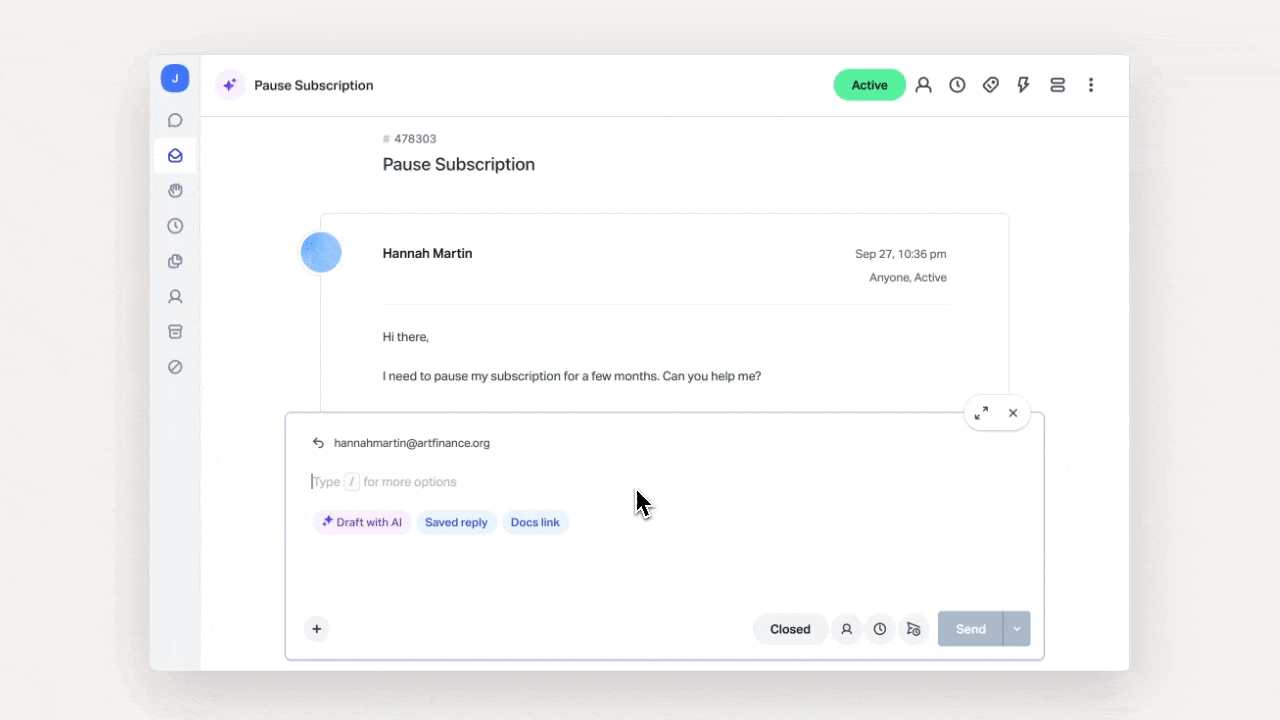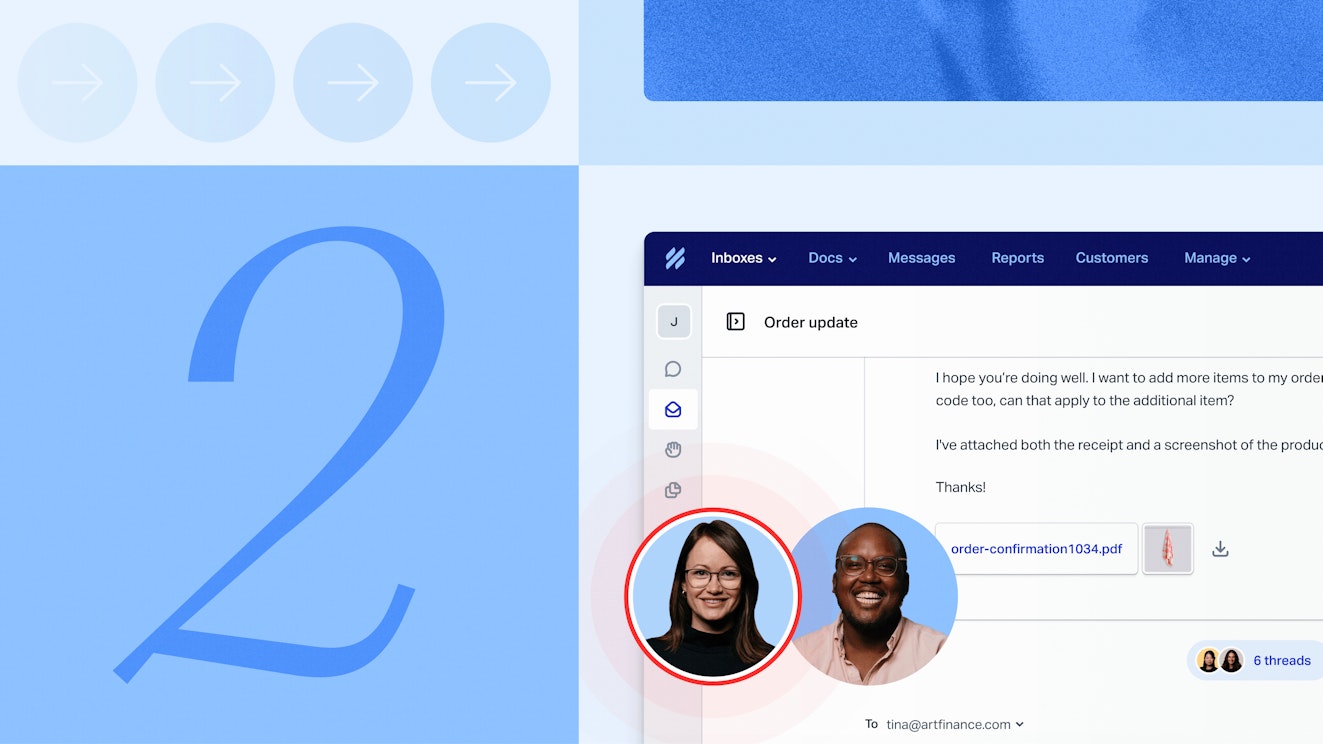Change is never easy, but it’s a constant in the fast-paced world of software. As someone who has spent years managing customer relationships and guiding teams through software transitions, I’ve learned that the key to successful change management lies in a thoughtful, structured approach.
At Help Scout, we understand the impact of change on daily workflows, which is why I want to share tips on how to manage the transition to our latest update: Inbox 2.
Why change management matters
When it comes to introducing new tools or updates to your team, it's easy to focus on the technical aspects. But, for lasting success, it’s essential to also consider how people adapt to new ways of working. Whether you’re switching to a new platform or updating your existing software, you’ll need time to adjust, learn, and adopt new habits.
Without proper change management, even the most well-intentioned updates can result in frustration, reduced productivity, and — ultimately — low adoption.
The transition to Inbox 2 is a perfect opportunity to employ change management best practices and ensure your team has a smooth, successful shift.
A suggested rollout plan for Inbox 2
We’re going to walk through a proven approach to rolling out new software in a way that prioritizes your team’s success. It’s known as the ADKAR method, and it can be a great way to approach change management.
In particular, I really like focusing on the “Why are we making this change and why now?” and the “What's in it for me?” steps along the way. If a team isn't bought in on the why and the what's in it for them, it can be really easy for a new rollout to fall flat and lose momentum.
So let’s take a look at how you can use the ADKAR method to help your team transition into Help Scout’s Inbox 2.
Before you begin:
To be able to get your team on board, you need to be on board, too! Spend some time getting familiar with Inbox 2 on your own, taking advantage of the resources listed in the steps below. Then, when it’s time to introduce it to your team, you’ll be ready to help lead the transition and provide support.
Step 1: Awareness
The first step is making sure everyone knows about the upcoming changes. During your next scheduled team meeting, announce the transition to Inbox 2. Highlight the most significant differences, including:
Updated UI and new brand colors: To improve readability and accessibility, we reduced the width of the conversation thread and introduced higher-contrast colors. Users will also notice that conversation threads now display in chronological order (from oldest to newest at the bottom) and some functionality has been moved to a kebab menu.

An updated editor: We’ve added a shortcut menu that makes it easy to quickly add a saved reply, image, attached document, or Docs article link to any reply. Combined with our other keyboard shortcuts, your team can move through customer requests more efficiently, saving time and effort in the process.

This is also a good time to go ahead and let the team know your final migration date so that they can begin to mentally prepare. If some members of your team have already made the switch to the new experience, invite them to share their thoughts. Their positive experiences can help ease concerns, and if there is any negative feedback, you’ll have the opportunity to address it head on.
You’re not alone!
Change is hard, but knowing that help is easily accessible can help make it a little easier. Let your team know that if they have any concerns or questions, we’re here to help!
If you have a question, just let us know, and the Help Scout support team will be there to work through any issues or concerns.
Step 2: Desire
The best way to overcome hesitation about a new tool is to get excited! Encourage your team to actively start using Inbox 2. There will be differences from the legacy Mailbox, but after a few hours of practice, muscle memory kicks in, and the transition becomes smoother.
You may notice that some team members take to the changes quickly once they get hands-on experience. They may even start to realize the benefits of the updates, as they’re able to navigate the platform and respond to customers more easily.
Ask them to share with the team what parts of Inbox 2 they enjoy the most and if they have any tips to share. Hearing how other folks on the team are doing may help encourage others to be more open to change.
Step 3: Knowledge
Now that your team has been introduced to Inbox 2, it’s time to increase their knowledge and engagement with the tool. While they can still opt in and out before the official migration, you can start encouraging more regular usage.
You may find that some folks may need more help adjusting, which is totally normal! To support the learning process, sign your team up for one of our live Inbox 2 training sessions. Our support team will walk through the new features and answer any questions you may have.
Remind your team that their transition to Inbox 2 is a two-way conversation. Encourage team members to share any feedback or questions they may have with our team — either in a live class or via email — so we can continue to make Inbox 2 the best it can be.
Aside from continuing to boost access to training resources, this week is also a good time for check-ins. How is the team feeling? Excited? Nervous? Frustrated? Gather feedback, listen to their tips and tricks (as well as any concerns), and continue to provide supportive guidance.
Not sure when to schedule training?
To help fit training into the team’s work day, try scheduling training during a slower time in your queue. Use Help Scout’s busiest time option in your email report to help identify a time that would work well for your team.
Step 4: Ability
Momentum is everything. As the migration date approaches, make sure the team stays motivated to fully adopt Inbox 2.
Try a few practice runs where the whole team switches over for a full day or two. Be on hand to provide guidance, partner members of your team who have taken to the changes more quickly with those who are still a bit hesitant, and try to keep everyone fully immersed in the new experience.
Many people tend to stay in their comfort zone until they are forced to leave it, so having some required practice before your transition becomes final gives those resistant to change a bit of a nudge to grow their skills.
This stage is another excellent opportunity for sharing feedback and best practices across the team. Remember, change management is an ongoing process — your involvement and encouragement are essential to maintaining team enthusiasm.
Step 5: Reinforcement
Change management isn’t just about the journey — it’s about celebrating success once you’ve reached the destination. By the end of the transition, your team will have adjusted to Inbox 2, and it’s time to acknowledge their efforts.
How you decide to celebrate your team’s achievement is up to you, but no matter how you choose to recognize your team, acknowledgement goes a long way in reinforcing positive feelings about the transition and encourages openness to future change.
Supporting your team through change
Whether you’re navigating a change like migrating to Inbox 2 or implementing an entirely new system, it’s important to remember that the human side of change is just as important as the technology itself.
By creating a clear plan, communicating early, and offering support at every stage, you can make change feel less daunting.
With Help Scout’s Inbox 2, we’ve built a tool designed to make your team’s life easier — and with the right approach to change management, you’ll be set up for long-term success.






